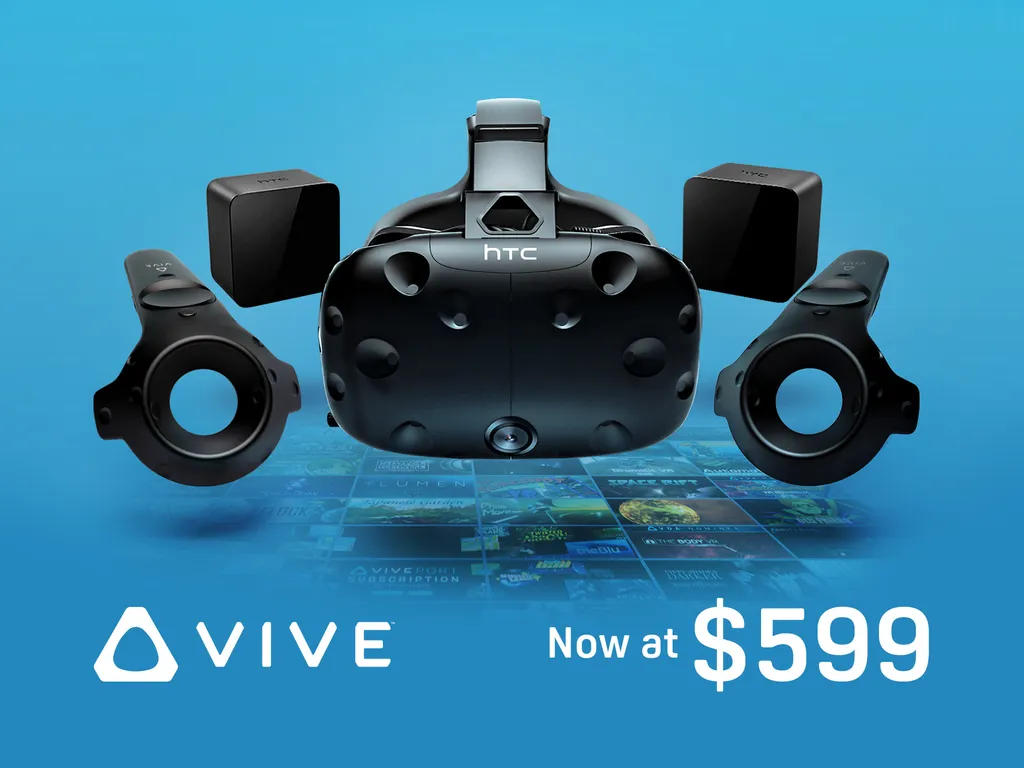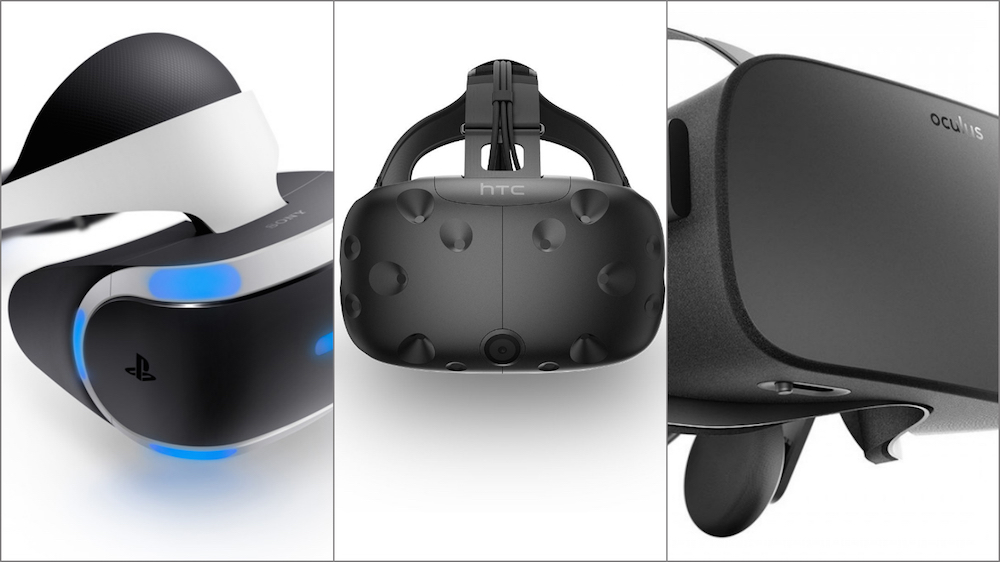HTC is slashing the price of the Vive by $200, bringing it to $599.
After approximately a year and a half on the market the HTC Vive is still one of the most advanced VR devices on the planet as it operates out of the box at room-scale, but easily working in standing or seated arrangements as well. However, all that technology came at a premium price that has, until right now, remained at $799 for the Vive headset, two motion controllers, and two base stations for tracking. Other than a few flash sales and minor discounts it’s been stuck at that price.
The updated package, priced at $599 for everything mentioned above, includes download codes for Richie’s Plank Experience, Everest VR, and Tilt Brush on Steam, as well as a one-month subscription to Viveport. The Viveport service has over 200 apps available, but you can only pick five to get access to over the course of a single month. It’s sort of like selectively renting content.
“It’s been a long time coming from a planned perspective and we’re very excited about it,” Dan O’Brien, General Manager for HTC Vive in the Americas, said to UploadVR during a phone interview last week. “The first year and a half has been great. We’re very happy with market share from a consumer standpoint. But as we come into Q3 and Q4, we are lowering the price to $599 permanently.” The price should be in effect as of this very minute or very soon after 12:01AM PT.
This is great news for the VR industry as price is the biggest barrier to entry right now. Consumers still need powerful PCs to run content on a Vive, but the price point will certainly help some decide to pull the trigger. As great as this news is though, the timing is very interesting. Earlier this year Oculus slashed the price of the Rift and Touch bundle and is currently running a massive “Summer of Rift” promotion that brings the cost of the entire bundle to just $399. After the sale is over a Rift and Touch with two sensors will still be $100 cheaper than the HTC Vive: $499.
According to O’Brien, this price cut is not a reaction to the Oculus sale or price drops. “We plan out our pricing and margins and life cycle planning a year plus in advance,” he said. “We planned a lot of price cuts and flash sales with events through the year that proved successful, but now as we go into the second selling season for holiday it’s time to bring the price down permanently and open up to a larger audience…This is not to clear inventory or set the stage for something else. This is us executing a long-term strategy plan to get to the point in the year when consumer dollars are spent more heavily on consumer electronics. From years of experience this is the right time to reset a price for a sucessful Q3 and Q4. This is about boosting adoption across the globe, it’s a global price drop.”
It’s also worth mentioning that UploadVR’s own Ian Hamilton recently penned an editorial last month specifically stating the HTC Vive needed a price cut to stay competitive. Wanna take a guess which number he named? Yep, $599. It’s the same topic we raised to you, our readers, just about a week ago as well in our Community Download column. Once it’s over the Rift vs. Vive race should heat up like never before and make this holiday season very competitive.
“I believe that this price cut is a good thing for the VR industry and the Vive platform,” said Anshel Sag, Associate Analyst at Moor Insights & Strategy. “It not only makes Vive more accessible and affordable but also gives room for people to buy Vive accessories which should be available soon. I think this price cut may be seen as reactionary, and perhaps it is a bit. However, they could’ve cut the price earlier, but didn’t need to because sales were still pretty good. I still believe both [Vive and Rift] headsets need to come down in price to become truly mainstream but this is a good starting point. The Vive is still the best experience in my opinion and I think they know that based on this price.”
Sony’s PlayStation VR is still only $399 but requires a ~$40 tracking camera to work, which is sold separately, and doesn’t include optionally supported motion controllers in the base model either.
The PSVR is a PS4-powered device as opposed to the PC-powered ecosystem of the Rift and Vive, but the three are often regarded as the top three non-mobile headsets on the market. In terms of market share of the three the PSVR is still leading with over 1 million sales. Sony hasn’t moved the PSVR from it’s initial price point either so you should expect to see a new bundle or price cut of some kind for this holiday season.
What do you think of the price cut? Will it help the Vive stay competitive? Do you think it was reactionary at all? Let us know down in the comments below!



























